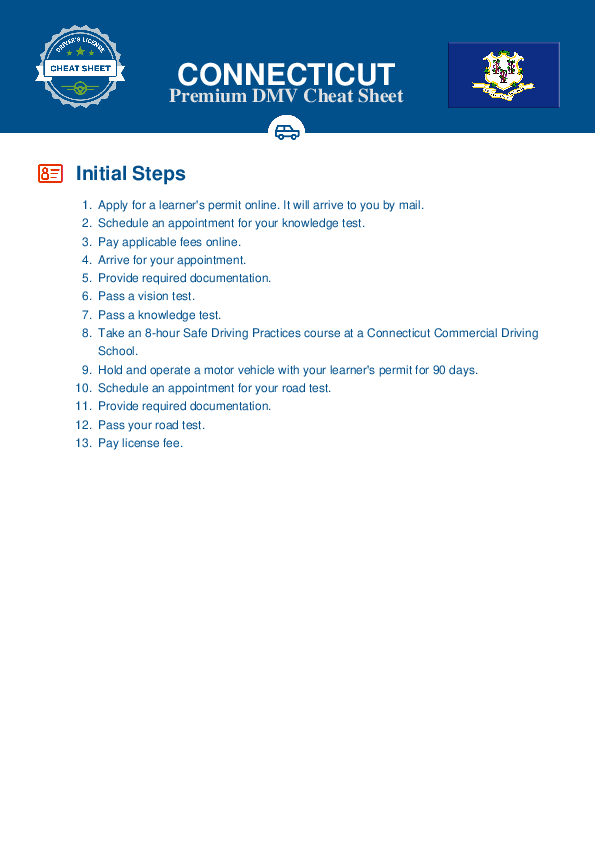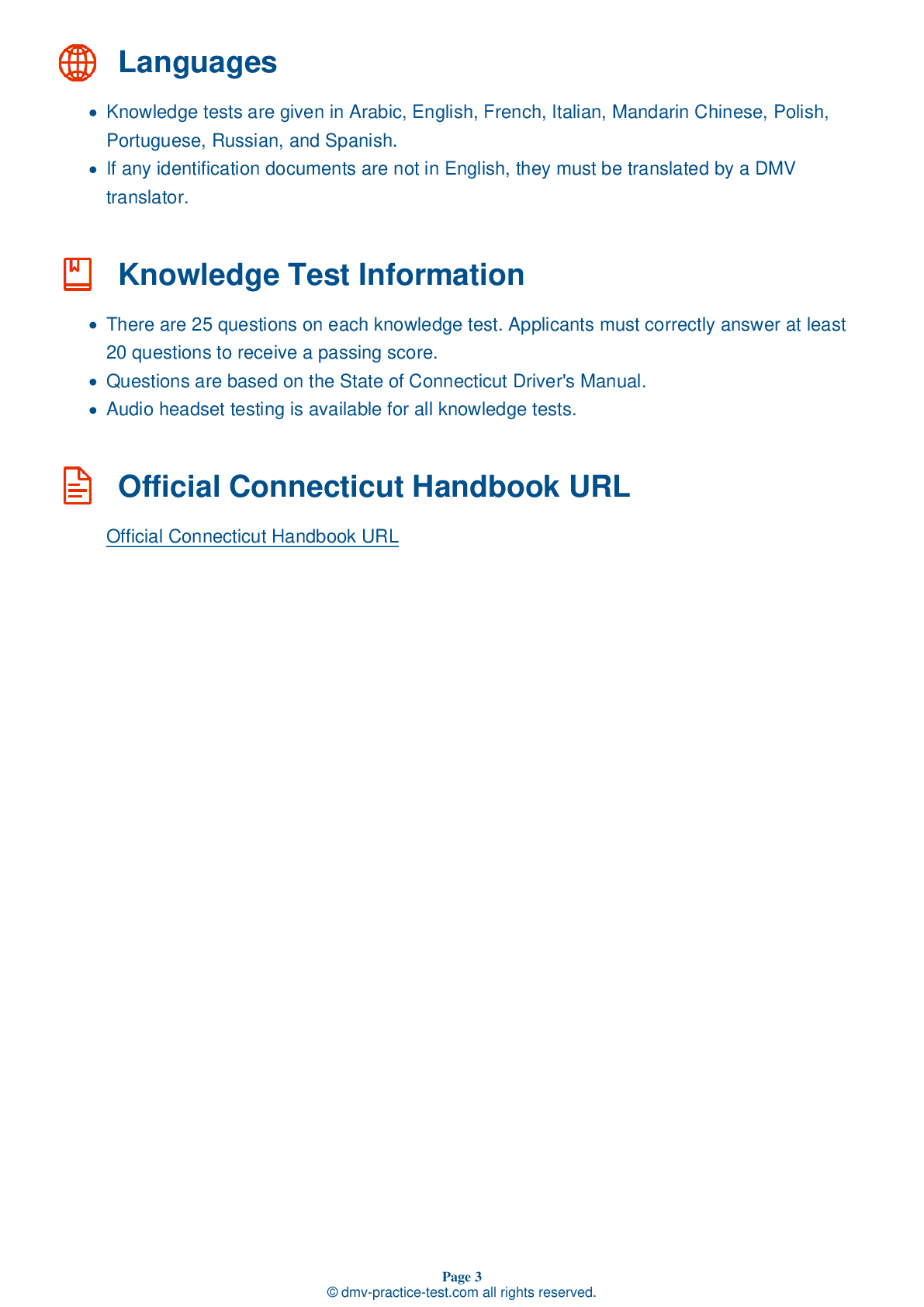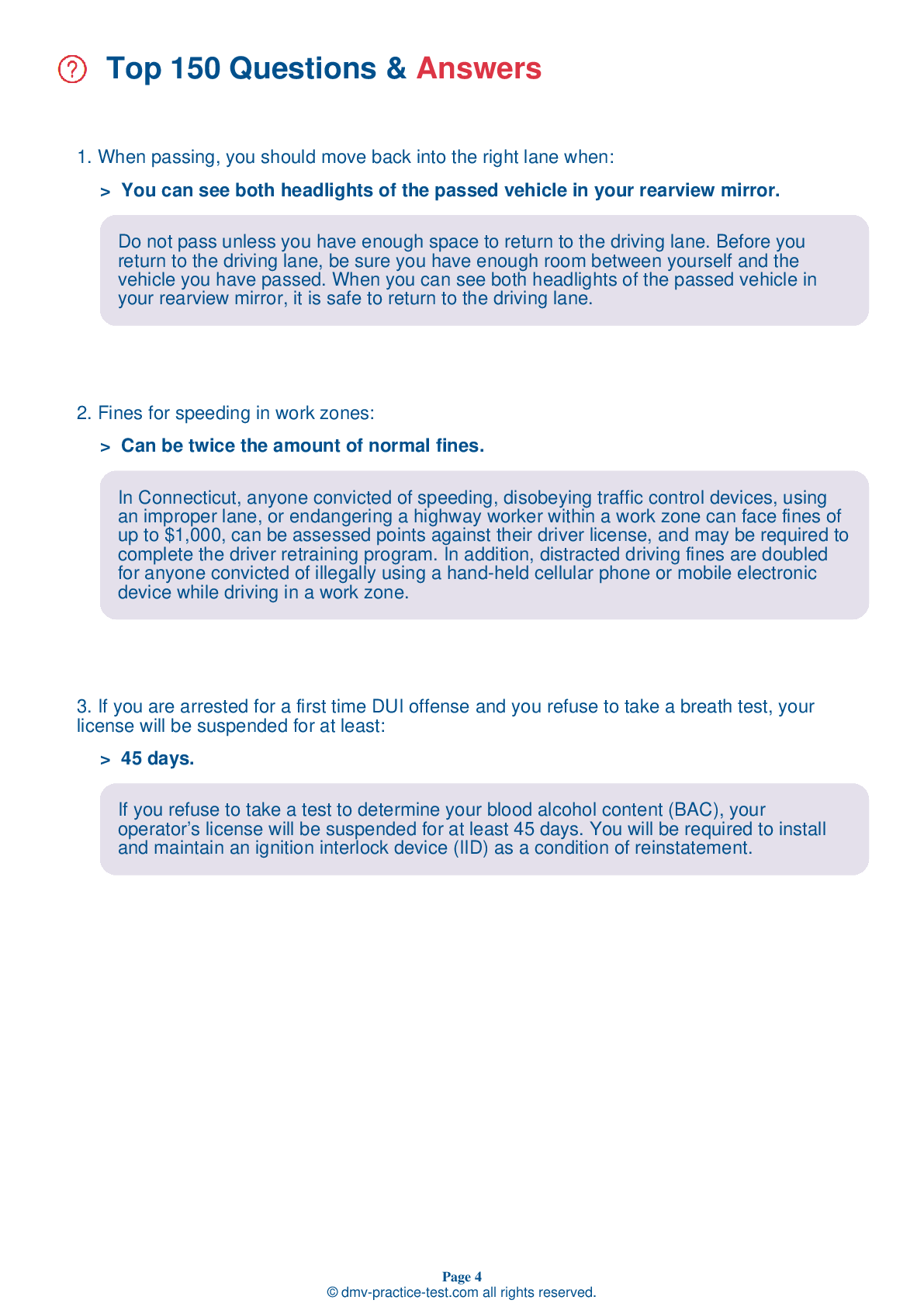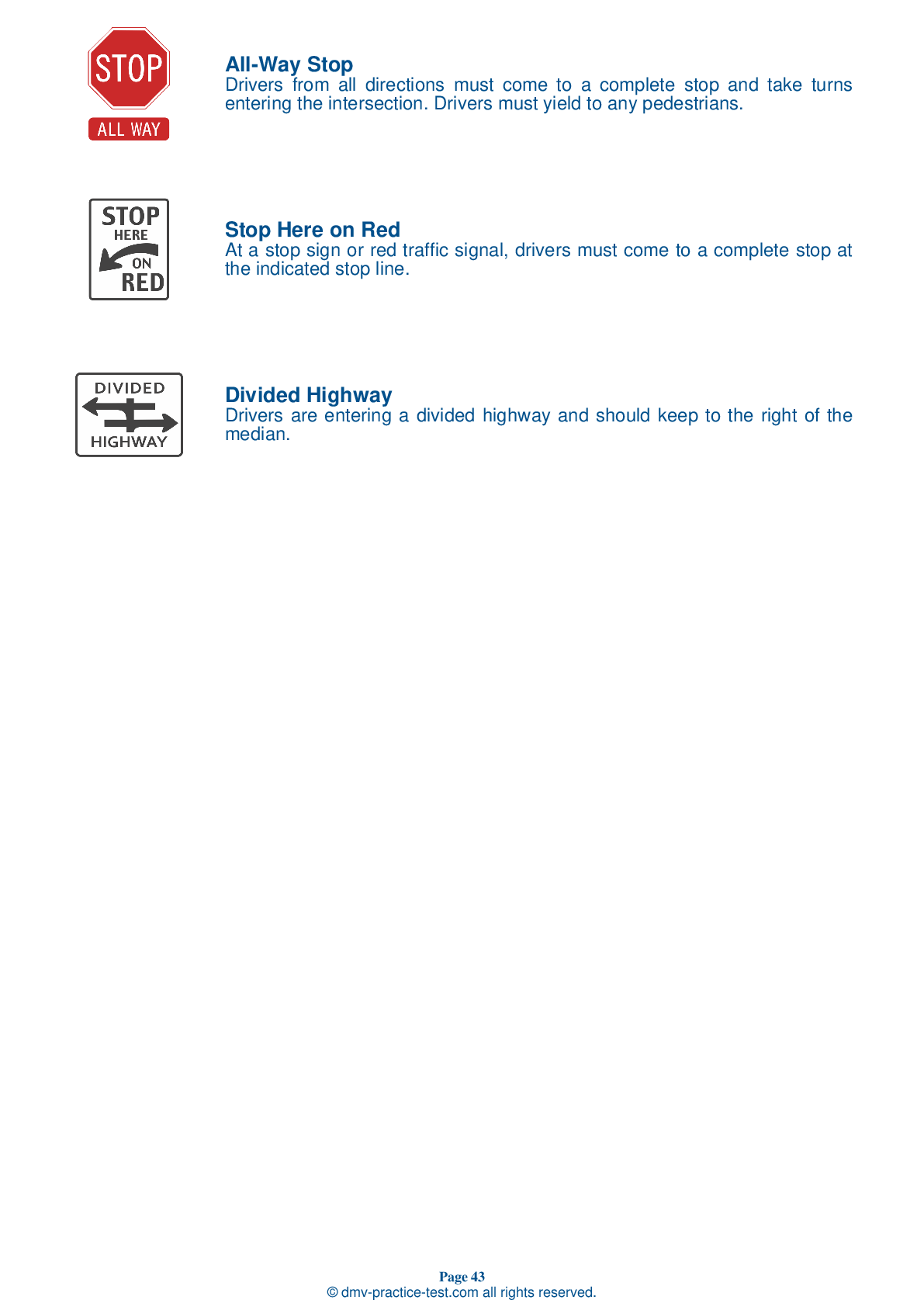FREE Connecticut DMV Practice Test #15 Page 3 of 3
This set of Connecticut DMV practise tests was just updated for January 2025. It includes questions based on the Connecticut Driver Handbook's most essential traffic signs and regulations for 2025. Use actual questions that are very similar (often identical!) to the DMV driving permit test and driver's licence exam to study for the DMV driving permit test and driver's licence exam.
Each practise test question has a hint and explanation to assist you in remembering the concepts. The written component of the official DMV test will include questions about road rules, traffic signs, and driving statutes, as well as information from the Driver Handbook.
To achieve the required passing grade, you must correctly answer 20 of the 25 questions. Take our DMV practise exam to help you prepare for your Connecticut instruction permit or driver's licence.
The DMV exam is available in several languages.
Using any form of testing help will result in an automatic fail, and the DMV may take further action against your driver's licence, so avoid it.
17 . When driving in fog, you should:
Drivers should use low beam headlights when driving in fog. High beams will reflect back at the driver, making it difficult to see.
18 . Drivers turning left must yield to:
Drivers making a left turn must yield to all vehicles approaching from the opposite direction. This includes bicycles and motorcycles.
19 . You may not park within how many feet of a stop sign?
There are many areas where you cannot park. Do not park within 25 feet of a stop sign at any time.
20 . It is dangerous to follow a motorcycle too closely because:
Motorcycles can stop quickly and following them too closely endangers your life and that of the motorcyclist. If the motorcyclist makes a mistake, you need to have enough time and space to avoid a crash.
21 . What does this road sign mean?




